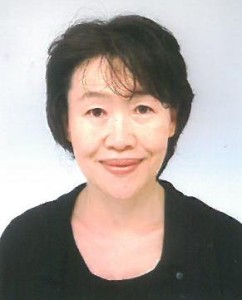
It is an exciting time for open access in Japan. While the Japanese government is planning to formally announce their report on how Japan should deal with their open access policy for publicly funded research in the next few weeks, Japanese societies are making plans for their move towards publishing more of their research open access.
At BioMed Central, we are delighted that this year we will gain three new partnerships with Japanese societies in addition to the three that we already have.
Our first society partnership in Japan dates back to 2007 with the launch of BioPsychoSocial Medicine, the official English publication of the Japanese Society of Psychosomatic Medicine. Then, in 2012 the Japan Society of Physiological Anthropology decided to relaunch Journal of Physiological Anthropology on the BioMed Central platform. The journal goes from strength to strength, increasing its submissions and publications from around the world and doubling its impact factor between 2012 and 2013.
In October 2013, the Japanese Society of Intensive Care Medicine launched a new journal, Journal of Intensive Care. And these three journals are joined in our portfolio this year, by Zoological Letters, Genes and Environment, and Journal of Pharmaceutical Health Care and Sciences.
To mark our new partnerships this year, I asked one of the leading lights of society journal publishing in Japan, Yuko Nagai, Secretary General of the Zoological Society of Japan (ZSJ) for her thoughts on the state of open access in Japan. Ms Nagai visited our London office to discuss the recent launch of Zoological Letters, a new open access journal from the ZSJ, which will focus on publishing highly citable work in zoology.
In our interview, transcribed in full below, Ms Nagai describes the society’s thinking in launching a new open access journal, and some of the considerations they took into account. She goes on to reflect on the changes taking place in Japan, from views around open access, to research from government, societies, and researchers, and gives advice to societies considering launching their own journal.
DK: Congratulations on the launch of Zoological Letters. Can you tell me the reason that the society chose to launch this journal open access?

YN: Thank you so much. But, as you know, the real work is still to come. We have been publishing our journal for 130 years, first as Zoological Magazine, which was later joined by Annotationes zoologicae Japonenses. These titles subsequently merged to form Zoological Science (ZS), which, as our society’s flagship title, is now published on a subscription basis on the BioOne website.
We had previously considered transitioning ZS to an Open Access (OA) model, but as seems to be the case for many subscriber-funded titles, this was not an easy change to make. In addition to the inherent challenges, we also wanted to maintain our emphasis on the importance of Zoological Science as a forum for publishing research of unique value to the community, rather than simply raising its Impact Factor.
That said, it was impossible for us to dismiss the ongoing shift toward OA publishing. Ultimately, the Zoological Society of Japan opted to launch a new OA title with stringent editorial standards focused on publishing highly citable work. It was a difficult decision, but one that we felt we had to make given the growing importance of OA.
And what is the current status of open access in Japan? Are there any mandates in place?
I’d like to comment on this based on my personal observation, rather than as a statement of official policy. As you may be aware, most of Japan’s OA journals are hosted on J-STAGE, which, while I suppose you could debate the semantics, I think has come to represent a de facto form of OA publication. This is not due to authors’ decisions about whether or not to publish their work in an OA journal, but simply because in most cases the electronic versions of articles are made freely available online.
I am not sure if that is completely consistent with how OA is currently defined, but I think this an important point when considering the state of OA journals in Japan – effectively, many journals already make articles freely available online, which are subsidized from society membership fees and other funding sources without relying on APCs.
The thinking has been that by opening up access, work would be read by a wider audience of researchers, and thus help to raise journals’ impact rankings, but we have found that this is not so simple to achieve. Making journals openly available is helpful to make them visible, but is not enough to gain them high impact. Unfortunately, many Japanese journal publishers still have that mindset.
So, in answer to the question, I would say that while many scientists understand what OA is and would be eager to publish in a journal like PLoS One, from the perspective of an OA journal it seems that Japan’s strategy for OA publishing remains under-developed. I should also point out that there is not really a push for making OA publication mandatory.
We haven’t had a deep public debate among stakeholders about the pros and cons of the issue; rather, most decisions have been made at the level of national organizations. As an example, it is worth looking at the policies developed by the Japan Science and Technology Agency (JST).
How do Japanese researchers feel about open access journals? Does anything need to change to make it more attractive to them?
That’s a difficult question. I think that younger researchers and more experienced ones have different views. Junior researchers would probably prefer to submit to influential OA journals, but I think established scientists have gotten fed up with the constant solicitations to submit from OA publishers, which may make them a bit reluctant when it comes to sending their manuscripts.
With open access increasingly becoming the norm, I think it’s safe to say that people think first about impact and reach, and then consider the OA option as an added bonus when considering where to publish.
Yuko Nagai
Zoological Society of Japan
In any case, with OA increasingly becoming the norm, I think it’s safe to say that people think first about impact and reach, and then consider the OA option as an added bonus when considering where to publish.
I think there is no question that the next big issue will be article processing charges—authors will begin comparing journals on price, and choosing to submit to the one with the higher IF if the APCs are the same.
At SPARC Japan in 2011, Peter Binfield, who was with PLoS One at the time, was invited to give a talk about mega OA journals, and he was joined in an interesting session by other speakers from Springer and Nature. In the panel discussion that followed, the question of where APCs were heading came up. Peter predicted they would drop, while Nature and Springer both expected them to rise. I would be very interested to hear how BioMed Central thinks about this very important question of finding the right price point for APCs.
Wanting to raise processing charges is understandable, but it seems inevitable for this to be linked to journal impact. For researchers, the ideal OA journal will have a high impact in their field, ensure that their work reaches others with similar interests, and offer a reasonably priced APC.
Of course, the peer review process and having a visible editor-in-chief are also important factors as well. I think that given the many sophisticated OA publishers and societies these days, it can no longer be said that publishing in OA journals means a drop in the quality of submissions. OA allows information to be disseminated to ever larger numbers of researchers, and for that reason carries with it an ever larger responsibility.
How do you think open access will develop in the future in Japan?
I think that the Japanese government’s policies will have a major effect on how researchers go about submitting their work. For better or worse, Japanese people tend to take rules seriously, and I think this holds true in this case as well—if the government sets a strong policy, people will generally fall into line.
As to whether that will happen, well I think that OA has already made strides in Japan. Many subscription-based journals are debating whether to switch to OA, and in fact one of the top journals in the country, Cancer Science published by Wiley, is now making that transition. I think the fact that it is a medically oriented journal played a big part in that decision, as did the fact that was already a well-established journal with a solid reputation. We are all watching this journal closely.
It’s important also to keep in mind the financial support provided by the Japan Society for the Promotion of Science, which has earmarked funds for launching and adapting business models for OA journals, a national policy that I think has made a direct and revolutionary impact in this area. Of course, academic societies also need to make a great deal of effort, but I think it is clear that this source of funds has helped spread an understanding of OA publishing in Japan.
As a society executive, what advice would you give to your colleagues in Japan when considering launching an open access journal?
I think it is crucial to make decisions based on a consideration of which publishers have already earned the trust of researchers in the field in question to determine whether it is a good fit for launching a new OA title. Of course, every journal will differ in terms of what’s right, so there is no absolute best answer.
We are facing a critical phase where we are about to see the Open Library of Humanities begin OA publishing with support from the Mellon Foundation, and PeerJ about to do the same in the computer sciences. Even before OA publishing became commonplace, it was difficult to build a reputation for a new journal, but now with so many new OA titles being launched seemingly without much forethought, it seems to me that many are not doing well.
Good, solid journals have a strategy for differentiating themselves from the rest, and I think that new OA titles will need a clear vision and strong support from both their founding society and their publisher. And of course having the right staff to handle the necessary administrative tasks is essential as well.
To find out more about BioMed Central’s activities in Japan, go to our Japan Gateway.
Comments